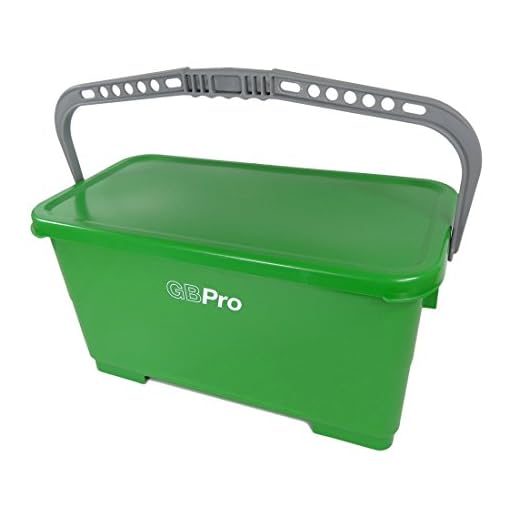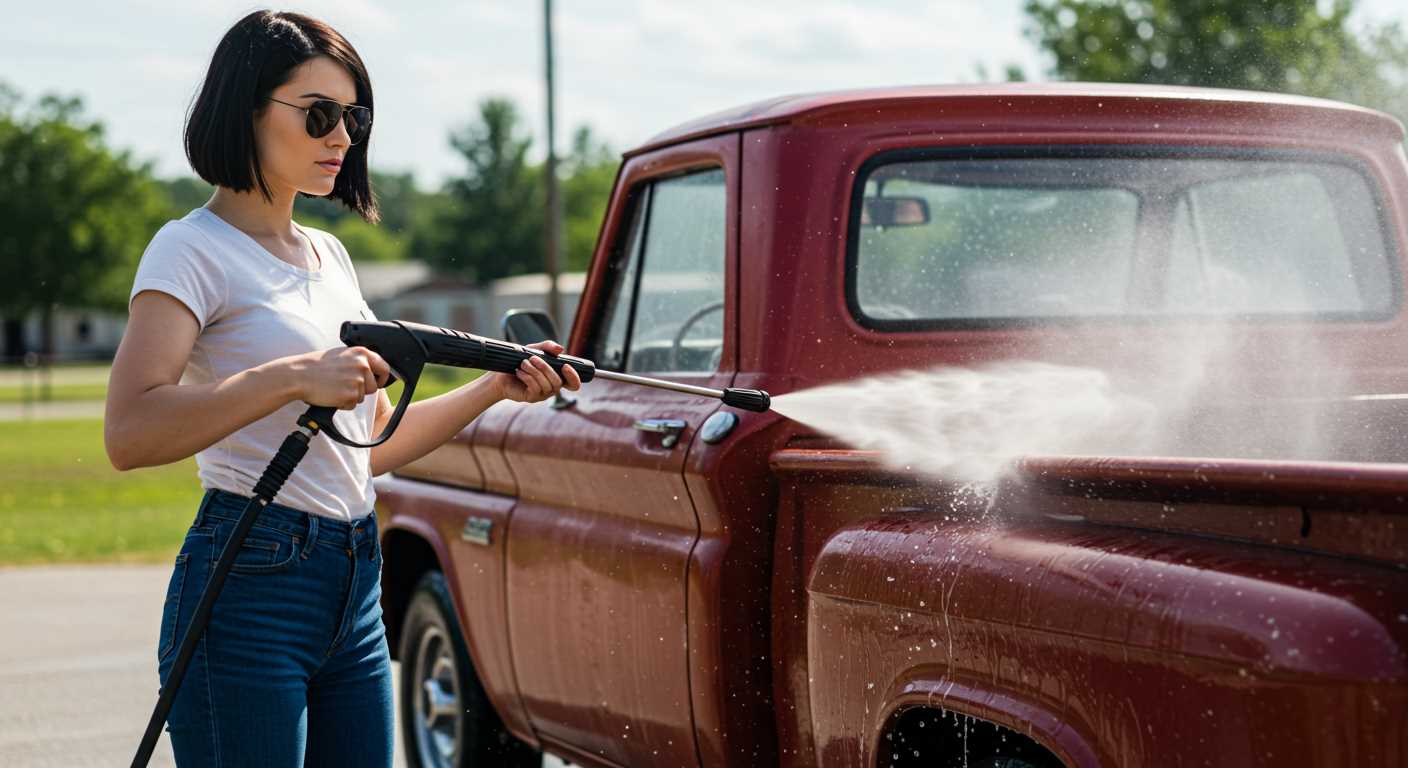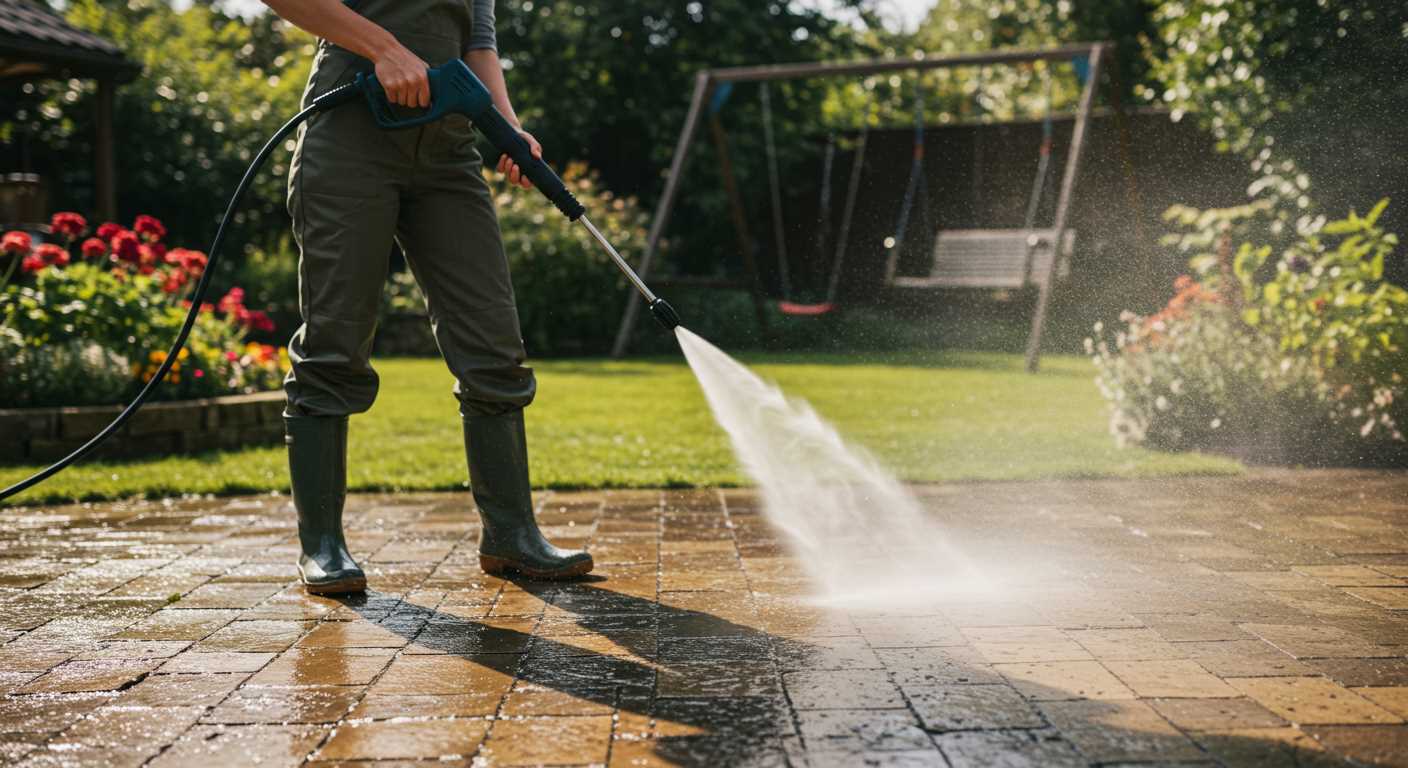



Utilising a blend of water and high-quality surface cleaner will significantly improve results. Choose a cleaner specifically formulated for outdoor slabs, ensuring compatibility with the equipment in use. Typically, these cleaners contain surfactants that break down dirt and grime, making the job easier.
For stubborn stains, consider a mixture that includes a small amount of bleach or vinegar. However, it’s crucial to test such solutions in an inconspicuous area first. Always adhere to the manufacturer’s guidelines for safe and effective use, preventing any potential damage to the surface.
Incorporating a dedicated attachment for loosening debris can also enhance cleaning. This tool applies a concentrated spray that can efficiently target tougher stains without excessive scrubbing. Keeping these recommendations in mind will lead to superior outcomes when restoring outdoor living spaces.
Choosing the Right Cleaning Solution for Your Patio

For optimal results, selecting the right cleaning agent is key. A mixture of warm water and a mild detergent will effectively remove dirt and grime without damaging the surface. Always check that the detergent is suitable for your specific material; for instance, a paver cleaner works wonders on stone surfaces.
Types of Cleaning Solutions

- Biodegradable Detergents: Ideal for environmentally conscious individuals, these solutions break down naturally and are safe for plants and pets.
- Chlorine Bleach: Effective for tackling mould and mildew, however, should be used cautiously to prevent damage to porous materials.
- Commercial Cleaners: These often contain specific formulations designed for different types of surfaces, providing tailored results.
Mixing Ratios
When combining detergent with water, a general rule of thumb is to use one part detergent to ten parts water. Adjust as necessary depending on the level of staining or accumulation of dirt.
Testing a small area first will ensure compatibility with the surface and prevent unintended damage. Regular maintenance with these solutions will prolong the life of the outdoor surfaces significantly.
Lastly, always follow the manufacturer’s guidelines on both the cleaner and the equipment for the best outcome in washing outdoor areas.
Understanding the Types of Surface Cleaners for Patios
Choosing the correct surface cleaner can significantly enhance results while tackling dirt and grime on outdoor surfaces. Rotary surface cleaners stand out due to their circular shape and dual rotating nozzles, providing an even clean and reducing streaks. For larger areas, they can save considerable time and energy compared to traditional handheld nozzles.
Flat surface cleaners complement these rotary options. They typically feature a flat base with multiple jets, ideal for broad, flat surfaces like concrete or composite materials. When seeking speed without compromising quality, flat models excel, yet they may not reach into grooves as well as their rotary counterparts.
Additionally, some types boast adjustable pressure settings. This is beneficial when transitioning between different materials, allowing users to tailor the intensity based on the surface type–gentler for delicate brick or stone, more robust for toughened concrete.
For intricate designs or textured surfaces, brushes attached to surface cleaners can be advantageous. The bristles help dislodge stubborn stains while providing a more thorough clean in the crevices.
When selecting equipment, considering compatibility with the existing equipment is vital. Ensure connections match the model at hand, particularly regarding hose fittings and pressure compatibility. Recognising these differences can lead to optimal performance and longevity in use.
Take the specifics of your cleaning needs into account. For example, for frequent maintenance versus deep cleans, specific design choices can provide maximum effectiveness tailored to individual requirements.
Mixing Proportions: How to Dilute Cleaning Chemicals

Understanding the correct ratios of cleaning agents to water is crucial for optimal results. Most manufacturers provide specific guidelines on dilution ratios, which can range from 1:10 to 1:50, depending on the solution’s concentration and the level of soiling. Always refer to the product label for precise instructions.
Basic Mixing Ratios
For general purpose cleaners, a common ratio is 1 part cleaner to 10 parts water. For tougher stains, a stronger mixture of 1 part cleaner to 5 parts water can be used. Make sure to test on a small, inconspicuous section first to ensure compatibility with the surface.
Tips for Mixing
Use a dedicated measuring cup for accuracy. When combining, first add the water to the container, then slowly incorporate the cleaning solution to prevent excessive foaming. Stir gently to ensure an even mixture. Always wear protective gear, including gloves and goggles, to avoid skin or eye contact with chemicals.
For those using a concentrate, keep a mark on the container for quick reference on future mixtures. Regularly clean your mixing equipment to prevent cross-contamination. Follow these guidelines for a safe and efficient cleaning experience.
Safety Tips for Using Chemical Solutions in Pressure Washers
Wear gloves and goggles to protect skin and eyes from splashes of corrosive substances. A chemical spill can lead to injuries or severe irritation.
Always ensure the working environment is well-ventilated. Fumes from certain products can be harmful; working outdoors is usually the safest option.
Proper Storage and Handling
Store cleaning agents in a secure place, away from sunlight and extreme temperatures, to maintain their effectiveness and safety. Keep all containers properly labelled to avoid confusion.
Disposal Regulations
Familiarise yourself with local regulations regarding the disposal of unused or expired chemicals. Many areas have specific guidelines to prevent environmental harm.
Alternative Eco-Friendly Cleaning Options for Patios
Using natural ingredients for exterior surfaces not only protects the environment but also effectively removes grime. A simple mixture of vinegar and water can significantly reduce dirt buildup without harsh chemicals.
Vinegar and Baking Soda Solution
A concoction of vinegar and baking soda proves to be a powerful ally against stubborn stains. Combine one part baking soda with two parts white vinegar, applying this paste directly onto the affected areas. Allow it to sit for 15-20 minutes before rinsing off with water.
Citrus-Based Cleaners
Citrus peels can be utilised to yield a potent cleaning solution. The natural acidity in citric acid serves as an effective stain remover. Blend citrus peel with water, let it steep for a few hours, then spray it onto any areas needing attention.
| Cleaning Agent | Application Method | Effectiveness |
|---|---|---|
| Vinegar & Water | Spray and wipe | Good for general dirt |
| Baking Soda & Vinegar | Paste application | Excellent for tough stains |
| Citrus Cleaner | Spray and rinse | Effective against grease |
| Castile Soap | Mix and scrub | Versatile for various surfaces |
Exploring these eco-friendly options makes it possible to maintain outdoor spaces while being mindful of the environment. Each solution offers its own set of benefits without compromising on cleanliness and freshness.
Maintaining Your Pressure Washer After Cleaning
Ensure the equipment is free from residues after use. Rinse the components thoroughly with clean water to eliminate any detergent or dirt stuck in the system.
Follow these steps for optimal care:
- Disconnect the water supply and detach the hose. Let any remaining water drain completely.
- Run the device for a few minutes without detergent to clear any leftover cleaning agents from the nozzle and internal mechanisms.
- Inspect the nozzle for blockages; clean any debris using a small brush or a pin if needed.
- Check the power cord and hose for wear, replacing damaged parts promptly.
- Store the unit in a dry place to prevent rust and corrosion on metal parts.
Regular checks will prolong the lifespan of the equipment. Keep an eye on seals and fittings, replacing them as necessary, to ensure an airtight system and prevent leaks.
A vacuum filter or water strainer installed at the inlet can help protect against debris entering the pump. Maintain cleanliness by examining and replacing this filter regularly.
For electric models, consider the following:
- Unplug the unit before any maintenance.
- Inspect the motor housing for dust accumulation; wipe it down gently.
For petrol-powered units:
- Check the fuel system for leaks; clean the air filter based on the manufacturer’s recommendations.
- Drain old fuel if the equipment will not be used for an extended period, as stale fuel can cause operational issues.
By following these guidelines, the longevity and performance of your cleaning device will be enhanced significantly. Regular maintenance not only ensures optimal functioning but also maximises efficiency, saving time and effort during future cleaning tasks.









